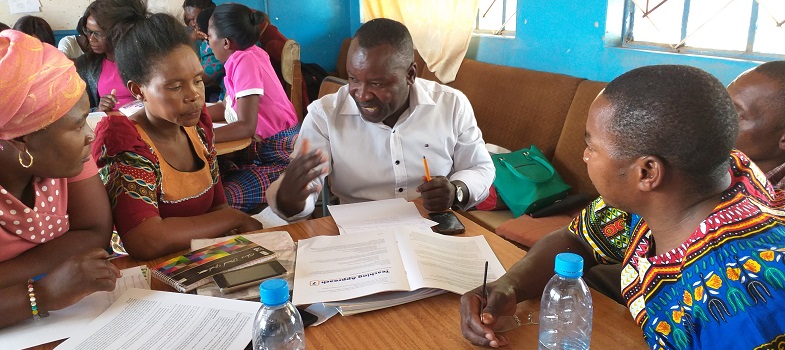Training guide
3. Supporting reading and writing through active teaching and learning
3.1. Using pair work to support literacy
Another teaching approach you explored in course 1 materials was pair work. In the example below, the teacher is using pair work to develop literacy skills around the topic of weather and climate, using one of the TESSA resources (Social Studies and the Arts, Module 1, Section 3).
Classroom Example 5.2: Using pair work to support reading in social studiesListen to the audio, or read the transcript, and make notes in your Teacher Notebook about:
Audio transcript: Rita teaches Social studies in Grade 6. She was teaching ‘6.5.1: Elements of weather and climate’ and noticed that learners had difficulties with weather words they were not very familiar with. She selected some words they were familiar
with and others which were causing problems for learners. She wrote the words and their definitions on separate pieces of paper. She asked the learners to form pairs with the person next to them. This meant that they worked with a friend and often high attainers were together and lower attainers were together. She gave each pair 10 words and 10 definitions and asked them to match the words and definitions. When they had done their words and she had checked them, they swapped their words and definitions with another pair. Some pairs completed it very quickly, but some found it very difficult and needed a great deal of help, so it was difficult to organise. She discussed the experience with her friend who taught grade 4. She decided to keep the pairs how they were but gave them different sets of words. The high attainers had longer more complex words, including some they had never met before and had to guess the meaning of, and the low attainers had shorter,
common words. She found it worked well. The low-attainers gained confidence and learned some common words which would help them in the future, and the high-attainers were challenged to try and read and understand new words. |
|
Did you notice:
This activity could be adapted for any grade and subject. |
Activity 5.3: Developing vocabulary skills with TESSA resourcesIn your TGM and working with a partner, find a TESSA activity that you can adapt to focus on developing your learners’ vocabulary skills. You will find this activity easier if you use the Curriculum Guide to help you find a relevant TESSA resource for your lesson. Whatever you are teaching in the curriculum, there are suggestions of helpful TESSA resources to help you in your lesson planning. Think about how Rita focused on the vocabulary that her learners were finding problematic. You could try a similar approach to Rita, using a different topic. Prepare the activity and resources together ensuring you write these in your Teacher Notebook. Try it in your classrooms and write your reflections in your Teacher Notebook. In the next TGM, share your reflections with your colleagues. |

Teacher using the Curriculum Guide to identify TESSA resources as she plans a roleplay activity in Kabwe District.
